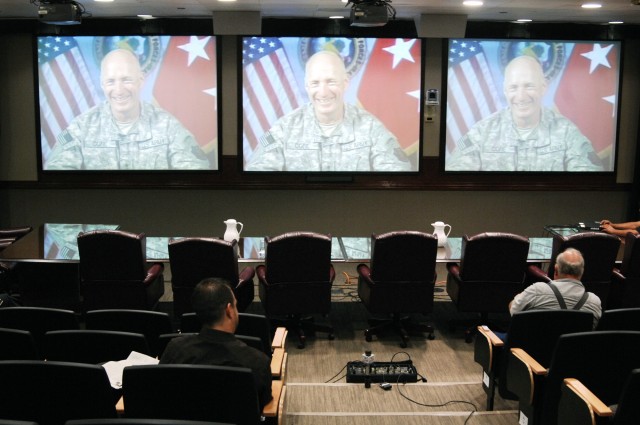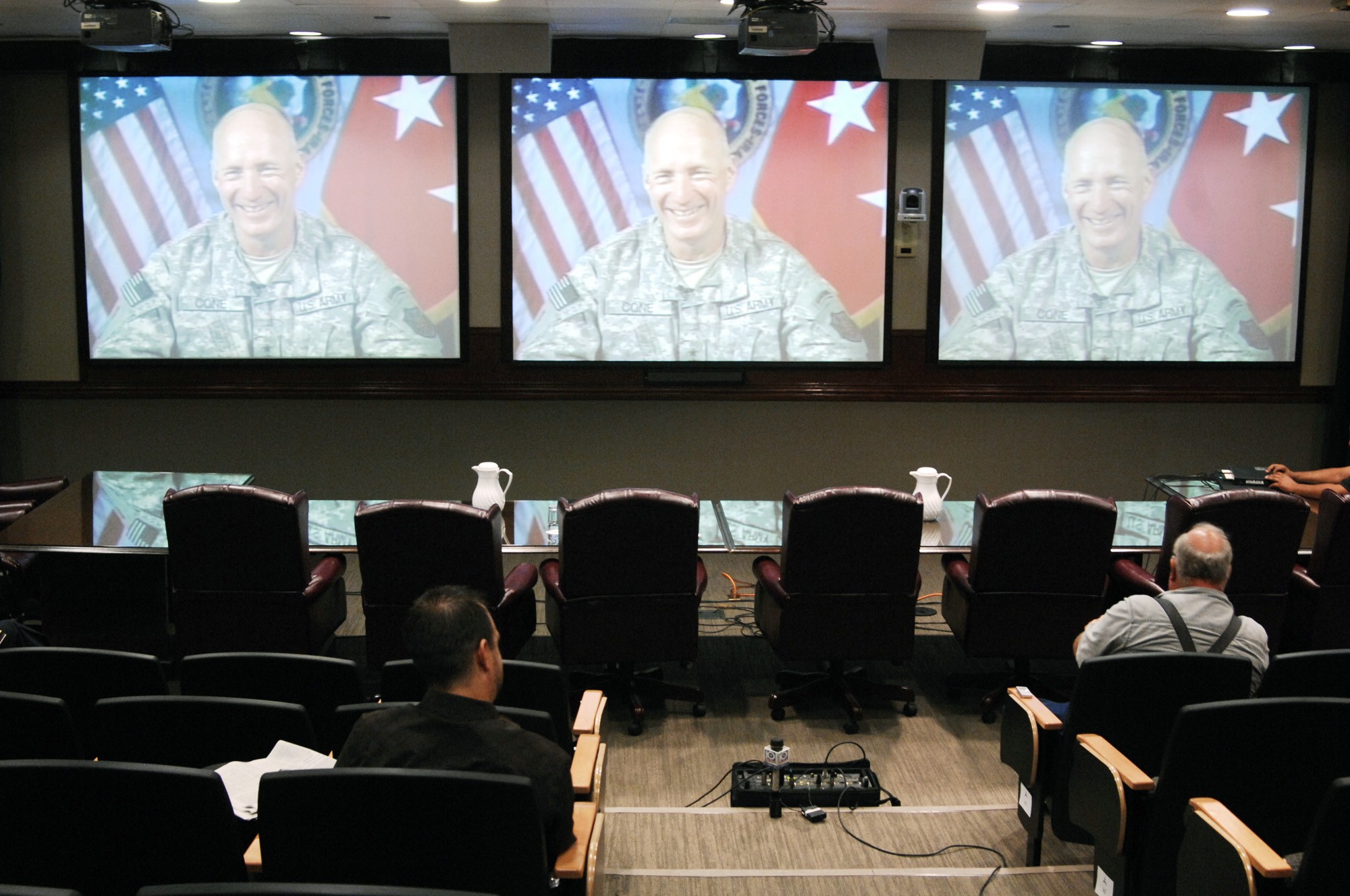FORT HOOD, Texas -- On the eve of the formal transition from Operation Iraqi Freedom to Operation New Dawn, Fort Hood and III Corps commander Lt. Gen. Bob Cone provided an update about the new mission in Iraq.
"This is a distinct and exciting time in Baghdad," Cone said.
Cone currently serves as deputy commanding general, U.S. Forces - Iraq.
Wednesday signified the formal end of combat operations in Iraq and a transition to stability operations. The date also welcomed incoming USF-I commander Lt. Gen. Lloyd Austin.
General Ray Odierno led the Iraq mission for two years, his latest assignment in the country in which he has served a total of almost five years.
Following the change of command, Odierno will head to Norfolk, Va., to lead U.S. Joint Forces Command.
Six months into their projected yearlong deployment, III Corps Soldiers have seen the closure of bases in Iraq, the reduction of troops to 50,000, and a transition from combat operations to a whole-of-government civilian approach.
"It's a great testament to the professionalism of our Soldiers, sailors, airmen and Marines to stay focused," Cone said.
With the end of the combat mission, U.S. troops will focus on the advise-and-assist role. They will retain some limited partnerships in the counterinsurgency mission.
Under the stability mission, Soldiers will work side-by-side with Iraqi soldiers, police and governmental leaders to ensure the Iraqis have the capabilities to succeed.
Cone projected the transition will be completed and Iraq on its feet in the next 15-16 months, within the president's timeline for U.S. forces to be out of Iraq by the end of 2011.
Currently, U.S. troops are working with 660,000 Iraqi soldiers and police to provide necessary muscle to defend their provinces and protect their people, Cone said.
Security is improving.
"There has been a significant decrease in violence," Cone said.
While Iraq is still dangerous and attacks still occur, Cone said these attacks are no longer part of a vast, coordinated network.
Cone said it is a misnomer to call the attacks still occurring in Iraq an organized insurgency.
"The last series of attacks here was August 25," Cone said. "Within hours, the markets were back open and people were out in the streets."
The general urges the American people to look at the broad context of the war.
"We are doing OK," Cone said.
A slight increase in attacks is typical during the season of Ramadan, which ends Sept. 13, but these events have not slowed Iraq's resolve or progress.
"They have had no effect on the Iraqi people," Cone said.
This transition to return control to the Iraqis has been a long time coming, he added.
Cone said the process started in June of last year when U.S. troops pulled out of Iraqi cities.
"We do these transitions over a long period of time," he said.
The transition from a combat mission to a whole-of-government, civilian process is time consuming.
"The important thing is a strategic partnership," Cone said. "We want a robust State Department approach."
As the training continues, the U.S. is maintaining its commitment to ensure Iraq's government succeeds.
Iraqi and American forces will share military schooling. Some Iraqi troops will be trained in America, Cone said.
The handover to Iraqi troops for the security mission has been evident as American military bases have closed and operations have consolidated. In Iraq, military bases have been reduced from 500 to 92 as part of the troop reductions and wrapping up the mission there. Remaining bases, called combined security locations, are strategically located, facilitating operations conducted by Iraqi troops and police, Cone said.
Although the U.S. presence has thinned, the country is still covered throughout, he added.
Now, all eyes are on the Iraqis.
"We're very focused on what the Iraqis are doing," Cone said.
That does not mean the mission of Fort Hood troops in Iraq has been completed, he added.
"We'll continue to see a commitment out of Fort Hood to Iraq," Cone said. "Fort Hood has a special place here."
Numerous rotations of Fort Hood units to Iraq have led to significant contributions to the mission there.
Cone said he frequently sees Iraqi soldiers wearing the patches of Fort Hood units, a reflection of the personal touch these units have had on Iraqis.
"Fort Hood has had a huge impact and paid a significant price here," Cone said.
Fort Hood's role in the country continues as troops with the 3rd Armored Cavalry Regiment are beginning their yearlong rotation in Iraq.
Cone has met with Brave Rifles troops arriving in Iraq and has discussed the stability mission.
Troopers with 3rd ACR will work with a number of Iraqi army and police units. They will serve as advisors, help develop plans, offer advice about logistics and intelligence and host training events, Cone said.
"There will be an equal number of troops committed to police departments," the general added.
Braves Rifles troops also will work cooperatively with the Iraqis on transport teams and with embassy personnel on Provincial Reconstruction Teams.
"This is still a dangerous place," Cone said. "They will help Iraq develop."
The general said he is already seeing how the diverse backgrounds of U.S. Soldiers are helping Iraqis.
"I'm impressed with how agile our Soldiers are," Cone said.
Though the mission is winding down and transitioning, there still is work to be done for 3rd ACR.
"They're busy, I assure you," Cone said.


Social Sharing